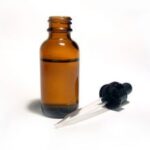The easiest way to determine the rate of beats per minute produced by the human heart is to manually check the pulse. The pulse is generally considered the rhythmic beating felt when the heart pumps blood towards the organs and systems of the body. Determining the pulse rate is essential in evaluating the fitness of the cardiovascular system and the overall health and fitness of the individual in question.
How to take a pulse
The manual pulse is usually taken by placing the index and second finger above a vein or artery then apply enough pressure to feel the pulsation in tune with the beating heart. The person taking the pulse should then count he beats for a total period of one minute, or sixty seconds. The number derived after sixty seconds is considered the pulse rate. The normal resting heart rate for an adult is 60-100 beats per minute. The lower number derived, the more efficient the cardiovascular system.
Don’ts when taking a pulse
The thumb should not be used by the person taking the pulse. Since the thumb has a strong pulse of its own, this may confuse the pulse taker and throw off the count. To determine the normal adult pulse rate, the individual should be allowed to rest and relax prior to taking the pulse, especially if they have recently completed strenuous activity. The index and second finger should apply only gentle pressure as to not restrict blood flow, cut off circulation, or create a tourniquet-like effect.
Pulse sites
There are many locations on the human body suitable for use in determining the human heart rate. The most popular or well known is the radial pulse. This is the pulse located on the reverse of the wrist between the bone, and muscular structure connecting the forearm to the hand, and corresponds with the radial artery. A secondary site for adults would be the brachial pulse. This pulse site is found on the inner portion of the bicep, closest to the body. This pulse is preferred when determining heart rate in infants.
Conclusion
Regardless of reason, the act of taking a pulse is a relatively easy way to determine the strength of heart function and the ability of the major vessels to transport blood throughout the body. The technique used in taking a pulse is easy to learn and valuable when caring for the human body
Sources:
http://healthfieldmedicare.suite101.com/article.cfm/vital_signs__how_to_take_a_pulse
http://firstaid.about.com/od/firstaidbasics/ht/08_Take_a_Pulse.htm
http://www.webmd.com/heart-disease/pulse-measurement


